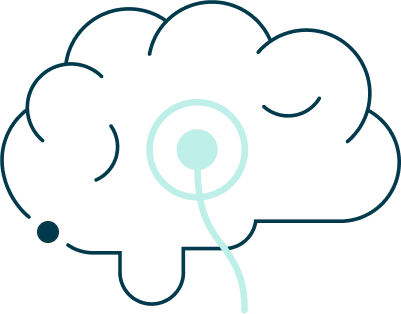Neurostimulation
What is neurostimulation for pain
It is an advanced therapy for the treatment of conditions with pain that are difficult to solve. Thanks to devices similar to heart pacemakers, we are able to use electricity to stimulate structures of the nervous system and thus relieve pain of different origins. The neurostimulation system consists of one or more wires called electrodes which, together with a battery, allow stimulation of the medulla or peripheral nerves. This circuit allows modulating the transmission of pain from the medulla to other areas of the central nervous system and thus reducing the amount of pain perceived by the patient.

For which pathologies is it indicated
For which pathologies is neurostimulation treatment indicated?
- Failed back syndrome: is the pain that patients have after spinal surgery. Both spinal region pain (either cervical / dorsal or lumbar) and radicular pain (sciatica / tingling in arms…) can be relieved.
- Pain in patients with post-herpetic neuralgia:it is the pain presented by those patients in whom the symptoms of herpes zoster have become chronic.
- Pain after knee surgery: this is the pain experienced by those patients who have undergone knee prosthesis surgery in which the pain persists or is even more intense.
- Neuropathic pain in patients after chemotherapy treatments: some forms of chemotherapy have the adverse effect of producing pictures of neuropathic pain in the form of tingling, electric shocks, numbness that usually occur in upper and lower limbs. These are pain symptoms that become chronic and cause pain to patients who have survived cancer.
- Post-surgical pain (after lung surgery, after amputations…).
- Complex regional pain syndrome: allows relief of this group of patients suffering from pain that is difficult to control.
- Chronic arterial ischemia:it is the pain caused by the lack of irrigation in the legs. With this therapy an improvement and relief is observed for these patients.
The procedure
In order to correctly apply this treatment and obtain the effectiveness it can provide, a correct diagnosis and evaluation of the patient is essential. The doctor will ask specific questions that, together with the physical examination and evaluation of the complementary tests, will allow a more precise determination of the cause or causes of the pain.
The implementation has several phases:
Test phase
1-2 days in which, usually under a one-day hospitalization regime, the leads are introduced into the epidural space (or neighboring a nerve if it is a peripheral stimulator). It is generally performed under local anesthesia supported by varying degrees of sedation (either conscious or deep sedation) because the patient’s cooperation is required to place the electrode in the ideal place in the nervous system. It will be this patient guidance that will ensure that the electrode system is in the right place.
Evaluation phase
10-20 days in which the patient will carry the wires from the epidural space to the outside to an external battery that will provide the energy for the stimuli. In this phase the patient will evaluate the effectiveness of the treatment and must specify the ability of the system to alleviate each of the forms of pain he/she presents. It is important to follow the doctor’s guidelines, limit the activity so that the electrodes do not move and be extremely clean as the electrodes will be exposed to the outside and connected to an external battery. In this phase the objective will be to evaluate that the treatment is able to relieve at least 50% of the pain.
Final phase
If the patient experiences more than 50% relief of pain, subcutaneous generator implantation is performed. It is usually performed on an outpatient basis (without hospitalization).
Efficiency
With neurostimulation treatment we seek to maximize the reduction of pain by more than 50%.
After a month, the patient would experience this reduction and, although we do not directly address the cause of the pain, there would be a very considerable improvement. We recommend that the patient see professionals such as rehabilitators or physiotherapists to reinforce the injured area.
+50%in most cases

Our customers say
Insurance companies
Ask your MIVI centre for information on the agreements with insurance companies.










